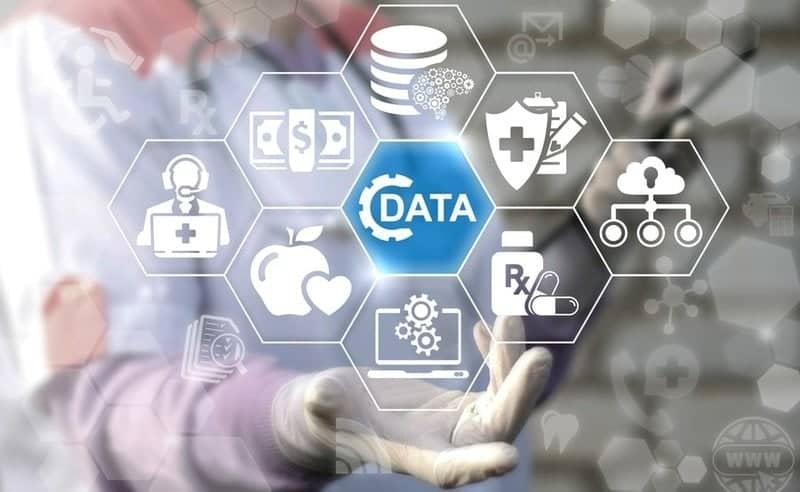Proactive Healthcare: Using Predictive Analytics to Prevent Illness and Disease

In the world of healthcare, there is an ever-increasing amount of data that is being collected. Healthcare organizations are recognizing the importance of utilizing this data to improve patient outcomes, reduce costs, and improve operational efficiencies. One way to make sense of this data is through the use of predictive analytics. Predictive analytics in healthcare has numerous benefits, from identifying patients at risk of developing chronic conditions to optimizing hospital operations.
Top 20 Examples and Applications of Big Data in Healthcare
The use of big data in healthcare is revolutionizing the industry. Here are 20 examples of how big data is being used to improve patient outcomes and reduce costs:

1. Personalized medicine
Big data is helping healthcare providers to tailor treatments to the unique characteristics of individual patients. With the help of genomics, medical imaging, and other data sets, doctors and researchers can develop personalized treatment plans that are more effective and have fewer side effects.
2. Disease surveillance
Big data is being used to monitor disease outbreaks and detect potential epidemics before they occur. By analyzing social media and other sources of data, epidemiologists can quickly identify trends and patterns that may indicate the presence of a new disease or outbreak.
3. Clinical decision support
Big data is helping doctors and other healthcare providers to make more informed decisions about patient care. By analyzing vast amounts of data from electronic health records, clinical trials, and other sources, predictive analytics can identify the most effective treatments for individual patients.
4. Cost reduction
By analyzing data on patient outcomes, hospital operations, and other factors, predictive analytics can identify ways to reduce costs while maintaining or improving patient care. For example, by optimizing staffing levels and resource utilization, hospitals can reduce waste and improve efficiency.
5. Fraud detection
Big data is being used to detect healthcare fraud and prevent waste. By analyzing billing data and other sources of information, predictive analytics can identify patterns that may indicate fraud or abuse and alert authorities to investigate.
6. Chronic disease management
By analyzing data on patient health, lifestyle, and behavior, predictive analytics can help healthcare providers to identify patients who are at risk of developing chronic conditions such as diabetes, heart disease, and obesity. Providers can then intervene early to prevent or manage these conditions more effectively.
7. Real-time monitoring
Big data is being used to monitor patients in real-time, enabling healthcare providers to detect and respond to changes in their condition more quickly. For example, sensors can be used to monitor a patient’s heart rate, blood pressure, and other vital signs remotely, alerting providers to potential issues before they become critical.
8. Predictive maintenance
Just like the automotive and aerospace industries have been using predictive maintenance, healthcare industry can also use big data analytics to gain insights in equipment reliability, predicting maintenance or repair needs, and avoid expenditure and downtime caused by unexpected failures. By tweaking maintenance schedule based on data, enabling more frequent and preventative servicing, thus increasing the lifespan of equipment and reduce emergency situations.
5 Benefits of Predictive Analytics in Healthcare
Predictive analytics has many benefits when it comes to healthcare. Here are five of the most significant benefits:

1. Early disease detection
Predictive analytics can help healthcare providers to identify patients who are at risk of developing diseases before they become symptomatic. By analyzing data on patient demographics, health history, and other factors, predictive analytics can identify patterns that may indicate the presence of a disease or a disorder. This can lead to earlier diagnosis and intervention, which can improve patient outcomes and reduce healthcare costs.
2. Treatment optimization
Predictive analytics can help healthcare providers to identify the most effective treatments for individual patients. By analyzing data on patient health, lifestyle, and behavior, predictive analytics can identify patterns that may indicate the most effective treatments for a particular condition. This can lead to improved patient outcomes and reduced healthcare costs.
3. Resource optimization
Predictive analytics can help healthcare providers to optimize resource utilization. By analyzing data on patient demand, resource availability, and other factors, predictive analytics can identify opportunities to streamline operations and reduce waste. This can lead to improved patient outcomes and reduced healthcare costs.
4. Improved patient satisfaction
Predictive analytics can help healthcare providers to improve patient satisfaction by providing personalized care that meets the unique needs of individual patients. By analyzing data on patient preferences, health history, and other factors, predictive analytics can identify ways to improve the patient experience. This can lead to improved patient outcomes, increased patient loyalty, and reduced healthcare costs.
5. Reduced readmission rates
Predictive analytics can help healthcare providers to reduce readmission rates by identifying patients who are at risk of being readmitted after discharge. By analyzing data on patient health, behavior, and other factors, predictive analytics can identify patterns that may indicate a higher risk of readmission. Providers can then intervene early to prevent readmission, resulting in improved patient outcomes and reduced healthcare costs.
11 Benefits of having Predictive Analytics in Healthcare
There are many benefits to having predictive analytics in healthcare. Here are 11 of the most significant benefits:

1. Improved patient outcomes
Predictive analytics can help healthcare providers to identify patients who are at risk of developing conditions and intervene early to prevent or manage these conditions more effectively. This can lead to improved patient outcomes, reduced healthcare costs, and increased patient satisfaction.
2. Reduced healthcare costs
Predictive analytics can help healthcare providers to identify ways to reduce costs while maintaining or improving patient care. By optimizing resource utilization, reducing waste, and detecting and preventing fraud, predictive analytics can help to reduce healthcare costs significantly.
3. Improved operational efficiency
Predictive analytics can help healthcare providers to optimize hospital operations, by identifying opportunities to streamline processes, reduce waste, and improve staff productivity. By optimizing operational efficiency, healthcare providers can improve patient outcomes and reduce healthcare costs.
4. Personalized care
With the help of predictive analytics, healthcare providers can tailor treatment plans to meet the unique needs of individual patients. By analyzing patient health history, lifestyle, and behavior, providers can develop personalized care plans that are more effective and have fewer side effects.
5. Preventive care
Predictive analytics can help healthcare providers to identify patients who are at risk of developing chronic conditions and intervene early to prevent these conditions from developing or worsening. By providing preventive care, healthcare providers can reduce healthcare costs and improve patient outcomes.
6. Improved diagnosis
Predictive analytics can help healthcare providers to improve diagnosis accuracy, by analyzing data on patient demographics, health history, and other factors. By identifying patterns that may indicate a particular condition, healthcare providers can improve diagnosis accuracy and improve patient outcomes.
7. Reduced medication errors
Predictive analytics can help healthcare providers to reduce medication errors by analyzing patient health history, lifestyle, and behavior to identify potential drug interactions or contraindications. By alerting providers to potential issues, predictive analytics can reduce the risk of medication errors and improve patient outcomes.
8. Reduced hospital stays
Predictive analytics can help healthcare providers to reduce the length of hospital stays by identifying patients who are at risk of developing complications or who may not require hospitalization at all. By providing more targeted care, healthcare providers can improve patient outcomes and reduce healthcare costs.
9. Improved patient safety
Predictive analytics can help healthcare providers to improve patient safety by identifying potential safety issues before they occur. By analyzing patient data, predictive analytics can identify patients who may be at risk of developing complications or adverse events, allowing providers to intervene early and prevent harm.
10. Improved patient engagement
Predictive analytics can help healthcare providers to improve patient engagement by providing personalized care that meets the unique needs of individual patients. By analyzing patient data, predictive analytics can identify ways to improve the patient experience, leading to increased patient loyalty and satisfaction.
11. Better public health management
Predictive analytics can help public health officials to manage disease outbreaks and other public health threats more effectively. By analyzing data on social media and other sources, officials can identify potential outbreaks before they occur, allowing for more targeted intervention and prevention efforts.
5 Ways To Be More Proactive With Your Healthcare
Being proactive with your healthcare can help you to stay healthy and prevent chronic conditions. Here are five ways to be more proactive with your healthcare:

1. Eat healthy
A healthy diet is essential for preventing chronic conditions such as heart disease, diabetes, and obesity. By eating a diet rich in fruits, vegetables, whole grains, and lean proteins, you can reduce your risk of developing these conditions and stay healthy for longer. Avoid processed foods, sugary drinks, and other unhealthy choices that can increase your risk of chronic disease.
2. Exercise regularly
Regular exercise is essential for maintaining good health and reducing your risk of chronic conditions such as heart disease, diabetes, and obesity. Aim for at least 30 minutes of moderate-intensity exercise most days of the week, such as brisk walking, cycling, or swimming. Find activities that you enjoy and make them a regular part of your routine.
3. Manage stress
Stress is a major contributor to chronic conditions such as heart disease, diabetes, and obesity. By learning to manage stress effectively, you can reduce your risk of developing these conditions and stay healthy for longer. Practice relaxation techniques such as deep breathing, meditation, or yoga to reduce stress and improve your mental health.
4. Get regular checkups
Regular checkups are essential for maintaining good health and detecting potential health problems early. Make sure to see your healthcare provider regularly and get all recommended screenings and tests for your age and gender. This can help to detect chronic conditions early and prevent complications from occurring.
5. Stay informed
Stay informed about the latest developments in healthcare and take an active role in managing your own health. Research your symptoms and conditions, and ask questions about your treatment options. By staying informed, you can make better decisions about your health and take proactive steps to prevent chronic conditions and maintain good health.
Predictive Analytics for Proactive Management with Active IQ
Predictive analytics can help healthcare providers to be more proactive with their management of patient care. For example, with Active IQ, healthcare providers can monitor and analyze data on the health of their patients in real-time. By analyzing patterns and trends in the data, providers can identify potential health issues before they become critical and intervene early to prevent complications.

Conclusion
Predictive analytics has numerous benefits for the healthcare industry, from improving patient outcomes to reducing costs and improving operational efficiency. As the amount of data collected by healthcare providers continues to increase, the importance of predictive analytics will only continue to grow. By using predictive analytics to be more proactive with patient care, healthcare providers can improve patient outcomes and reduce healthcare costs, leading to a healthier and more sustainable healthcare system.

Source image : www.datatobiz.com

Source image : www.slideshare.net

Source image : silverlinecrm.com

Source image : patch.com

Source image : www.ubuntupit.com




